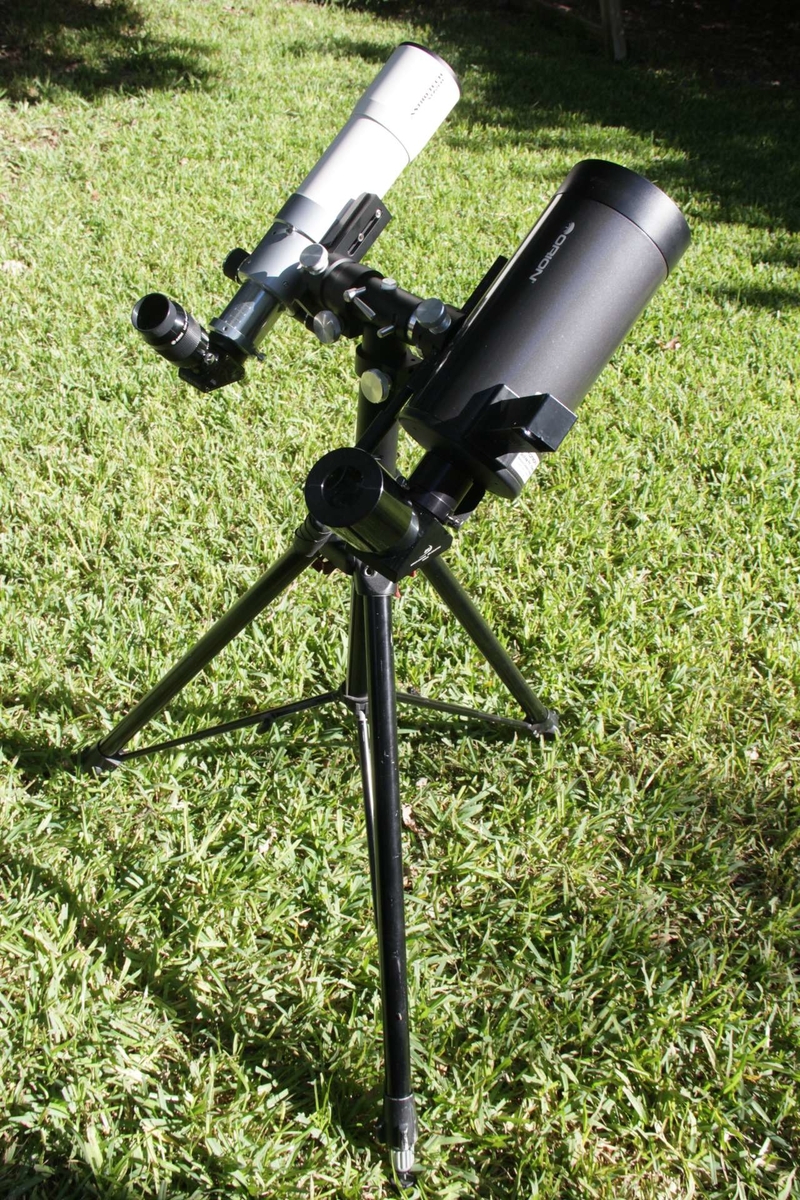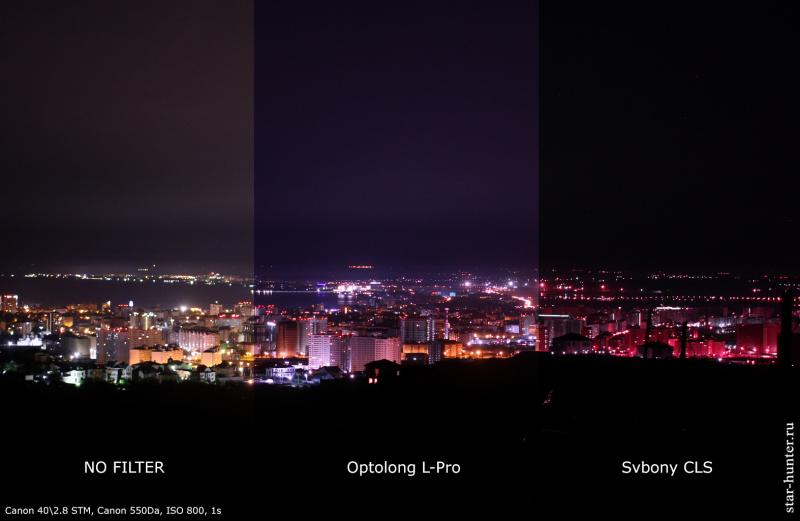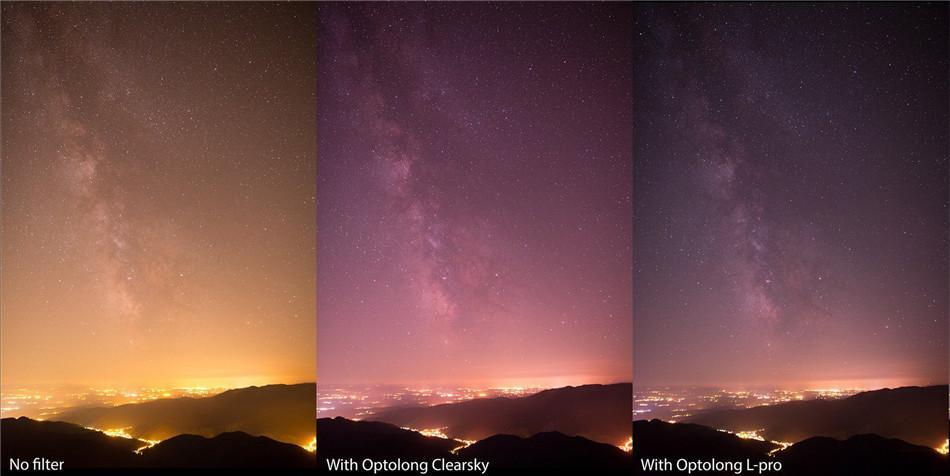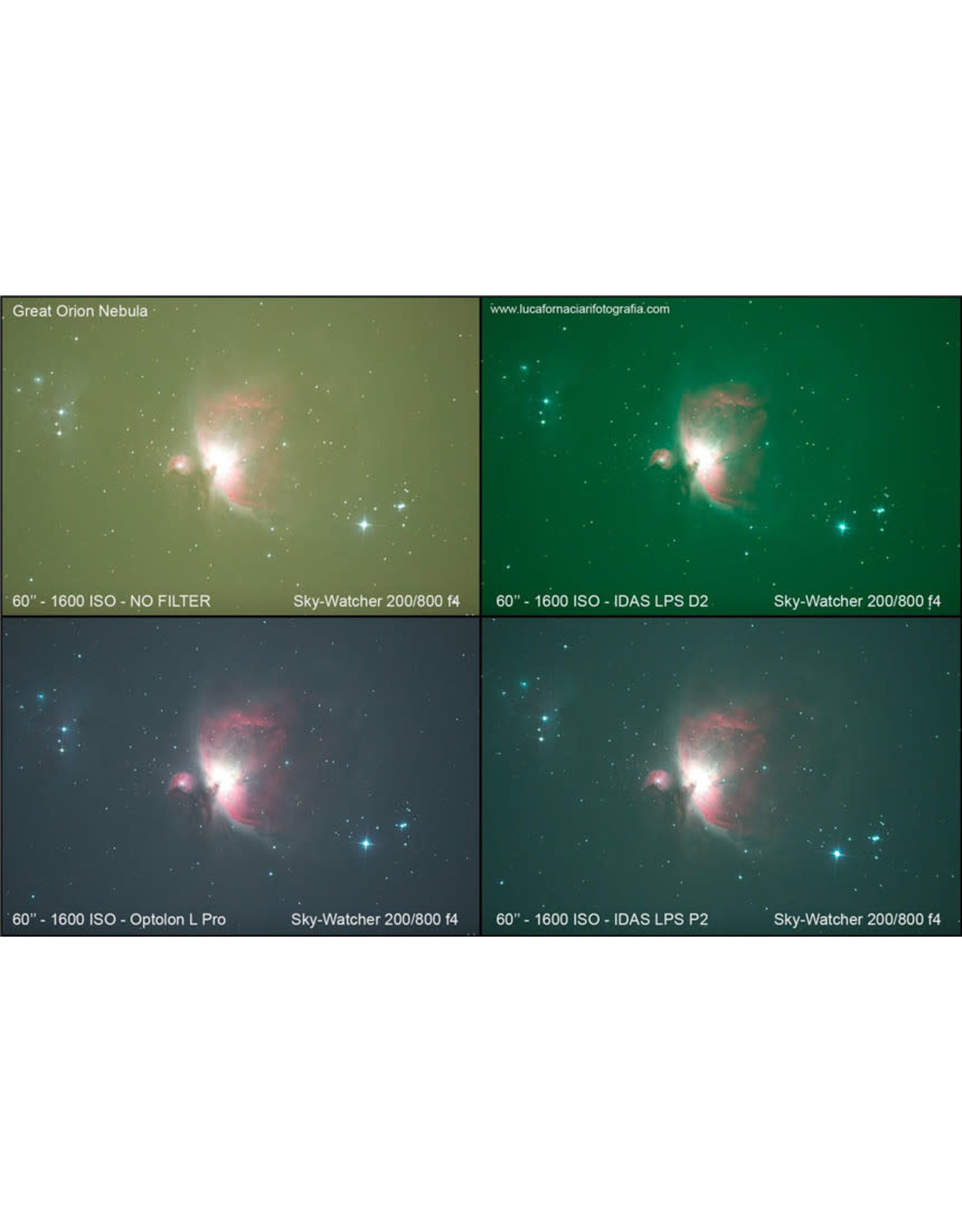
Louis D
-
Posts
9,366 -
Joined
-
Last visited
-
Days Won
1
Content Type
Profiles
Forums
Gallery
Events
Blogs
Posts posted by Louis D
-
-
But you've felt no need to raise the twist-up eye cup due to excessive eye relief?
-
8 minutes ago, Mike Q said:
I have the Orion version of this eyepiece. It works very good on planets and you get decent deep sky images too. It is way better then the 7 to 21 eyepieces, easily better then the 8 to 24 Celestron and only a half a step behind the Baader 8 to 24. This eyepeice gets two thumbs up.
Does it have 20mm of usable eye relief for eyeglass wearers as claimed by both Orion and FLO?
-
I wonder how well carbon fiber tripods stand up to being banged in the side during loading/unloading in a car. My well used Manfrotto 058B has a good ding in one of its aluminum legs that doesn't affect it ability to extend at all. I do wonder if it creates a weak point where buckling may someday occur. Given that I never extend the legs, and there are two more leg sections inside, I don't think it would lead to a catastrophic failure. The 26 pound load rating is for when it is fully extended to 7 feet tall. I have no idea what its load capacity is when not extended with the geared column all the way down and locked. I put 25 pounds on it all the time with the DSV-2B mount and two small to mid sized scopes without any issues. If I crank up the center column, it has to be exactly level or there is some binding that goes on during the motion. I'd rather have the heftier geared center column of the Manfrotto 161 (Bogen 3058), but they're hard to find for under $200 used. If I even move up to a DSV-3, I'll probably have to get one, though.
-
 1
1
-
-
1 hour ago, GrampyG said:
Perhaps a quick smack with a 7lb sledge hammer would do the trick 😬?
Worked for this guy:
-
Since it proclaims Schott glass on the side label, it's pretty safe to assume it's an ED scope of some sort.
-
49 minutes ago, F15Rules said:
Wood naturally absorbs vibrations, whereas steel tends to transmit them. It looks great, is durable, and feels less cold to the touch than steel in cold weather, as well as normally weighing less than steel
How low can you set a Berlebach tripod for seated use? I use the adjustable leg angles on my Manfrotto 058B to allow the legs to splay out enough to bring the eyepiece down to a seated level. If I'm observing near zenith, I just crank up the elevator a bit. How do you adjust the height of the Berlebach to account for differences between low altitude and high altitude objects? On soil, vibrations naturally damp out very quickly. If I'm setup on concrete, I put Sorbothane pads under each foot to reduce damping time from 3 seconds to 1/2 second, which is quite acceptable during focusing.
-
 1
1
-
-
I did a quick Google search and found the following imaging comparisons:
https://star-hunter.ru/en/optolong-l-pro-clip-eos-review/





I would say it's more applicable to general imaging than visual from light polluted skies where maintaining color balance and shorter exposures is important. Visually, it would have a subtle effect, but would probably be a decent choice for galaxies. For nebula, there are better choices. It just depends on what you want from a filter.
-
 1
1
-
-
You'll also get less vignetting with the 2" camera adapter.
-
Yes, focuser travel is generally setup assuming use of a diagonal. You shouldn't have any issues with the DSLR if using a T-mount because it will add 55mm of extension which is very similar to the optical path length of a 1.25" diagonal (65mm to 95mm, depending on prism vs. mirror and brand).
-
 1
1
-
-
On 19/03/2022 at 13:18, Mr Spock said:
Nah, I think I've got all focal lengths covered with what I have
 Shame they don't do a 7mm though...
Shame they don't do a 7mm though...
You'll have to hunt down an original Vixen LV 7mm. It was dropped for the NLV and SLV lines. The 7mm Pentax XW is decent enough, though.
-
Looks like the designer chose a path similar to Hubble Optics for the upper cage.
-
 1
1
-
-
Speaking of close focusing, when taking test photos inside my house through the 127 Mak with an eyepiece, I can't rack the mirror enough to bring an object at 35 feet into focus. It's not a problem at all with either the 72ED or 90MM APO to reach focus, though. So, I add about 50mm of extension to the rear port and leave the mirror roughly at its infinity focus position. As a bonus, it is still operating close to its design focal length.
Apparently, close focusing is not a strong suit of Maks.
-
You have to find out the design back focus relative to the rear port; and then focus something like the moon, which is effectively at infinite distance, on something like Scotch tape at the back focus distance. Now your mirror is at the design distance from the secondary and you can start to take measurements. The problem is, has Synta ever published the design back focus for their 127 Maks? Celestron and Meade generally published this information with their SCTs which have the same issue.
-
 1
1
-
-
You'd want to look at the lens using a stereo microscope to try to figure out what's causing the residual fogging before doing anything more. Is it on the surface, inside, or perhaps the cement between lenses in a group that's foggy? Perhaps it was etched by fungus. Perhaps it was coating failure. Polishing is likely to just make matters worse and/or change the lens's figure. I've got old military eyepieces with lens fogging that I can't clean off or even lessen. I can't even figure out what caused it. I've just accepted the status quo with them.
-
 1
1
-
 1
1
-
-
Is this for imaging or visual use?
-
 1
1
-
-
Any idea of how long it took to transit the sun? What direction was it moving relative to the sun/horizon? How about size relative to the sun? Remember, satellites move at all sorts of different speeds depending on their orbital altitude. A geosynchronous satellite would stay in the same location on the sky while the sun passes behind it, for instance.
-
Hmmm. I used the stop Celestron visual back on my 127 Synta Mak for a while before moving to a 2" visual back and don't recall diagonal "flopping" being an issue, whatever you might have meant. It seemed nice and secure.
Yes, you should be able to make the 2" visual back to 1.25" diagonal approach work if you take @Zermelo's advice above.
You could also just mount a better 1.25" SCT visual back with the Mak to SCT thread adapter such as this or this if you're never going to use a 2" diagonal and eyepieces.
-
21 hours ago, rwilkey said:
I do not believe you will be disappointed, it's good for the Moon but not much else in my humble opinion.
I was able to use my 3.5mm Pentax XW on Mars during the last opposition to good effect. However, as I've said before, the view was much better with two eyes through my binoviewer at similar powers. That's why I've felt zero need to pick up a used 3.2mm BST/Paradigm just to see how it performs. It's a one or two trick pony as you say.
-
 1
1
-
-
16 hours ago, Franklin said:
What do folks think an ideal mag jump actually is?
Starting out with limited funds (by my current standards) a quarter century ago, I bought a 38mm Rini MPL 2" eyepiece, a 14mm Pentax XL, a 9mm Vixen LV, and a 5.2mm Pentax XL. What's that, 2.7x, 1.6x, and 1.7x jumps? I never felt the jumps were too large.
Even today, I don't use my 20mm to 30mm eyepieces very much because my most used telescopes are operating at somewhat shorter focal lengths. If I was regularly using my 15" Dob, I would probably use them much more. Thus, I don't think think there's much of a need for eyepieces between a widest field 2" finder eyepiece in the 35mm to 42mm range and mid-power 1.25" eyepieces in the 12mm to 17mm range for most folks using sub-1500mm focal length scopes.
Today, I'm more of an astro tourist staring out the window at the overall beauty of the scene rather than being a detailed observer looking to make microfine observations and logging them. As such, I prize the overall presentation and quality of the view over having the absolute sharpest on axis view possible given the moment by moment seeing conditions. I sometimes enjoy observing with multiple eyepieces of nearly the same focal length just to experience the different viewing esthetics of each. Given my ever brightening backyard skies, there are fewer and fewer objects I can observe, so different eyepieces with different presentations can spice things up.
I am looking to buy a second home out and away from most light pollution. At that point, I may reassess my eyepiece collection and usage.
-
 6
6
-
 1
1
-
-
15 hours ago, Franklin said:
Wow, the rare 7mm Vixen LV! They rarely come up for sale on this side of the pond. Vixen dropped that focal length for the NLV and SLV lines for some reason.
You're missing the Vixen 30mm LV or LVW and the 50mm LV to fill in a couple of 2" gaps. 😉😁
-
 2
2
-
-
4 hours ago, F15Rules said:
You must get through GALLONS of Baader Wonder Fluid!! 😱😂
Dave
I actually only clean my eyepieces about once a decade or so because I always observe with eyeglasses, so my eyepiece eye lenses tend to remain pristine. Even when I do clean them, I prefer Windex because it has a bit of detergent and leaves no streaking. Pure alcohol solutions like BWF don't seem to cut through tree sap spots which are my main grunge.
If I put a fingerprint on an eyepiece eye lens, I immediately wipe it off with a dry microfiber cloth after blowing off dust and then huffing on the lens to give it a bit of moisture to lubricate the cloth. It's the same technique I've been using for 40 years with my photography lenses to good effect. If you don't immediately clean off a fingerprint, it seems to harden over time and becomes a much bigger problem to remove.
-
 4
4
-
-
I'm using GSO diagonals (which are sold under a variety of brands) with either an SCT to M48 thread converter on the front with a 15mm M48 extension ring or an SCT male thread to 2" nosepiece adapter as a single piece solution. Simply screwing the TSFLAT2 onto the front of the diagonal nosepiece provides too much separation (about an extra 15mm, IIRC) and overcorrects the field curvature.
I've read that the Long Perng diagonals (the ones with the convex eyepiece receiver barrel sold as WO, Orion, StellaMira, etc.) natively have M48 threads on the nose barrel thread instead of SCT threads, so that might be an easier approach to mounting a TSFLAT2. Perhaps someone on here who has one can confirm their nosepiece thread size.
I've got a bunch more M48 spacer rings of various lengths now, so I'll see if I can fine tune the spacing for both the 72ED and 90mm APO in the future. Technically, the 90mm should require 12mm less separation having a 50% longer focal length, but I've found 15mm of extension to still provide better field flattening over no extension, subject to the aforementioned fine tuning.
-
 1
1
-
-
You really need to verify which issue you're seeing. If you're truly seeing field curvature, you can focus it out by refocusing for the edge. If you're simply seeing field distortion as others above describe, it is not called field curvature. Calling it that simply misguides us in trying to help you out.
If you are truly seeing field curvature, a TSFLAT2 used ahead the diagonal can generally flatten the field. I use them on both my 72ED and 90mm APO refractors to good effect with my wide field eyepieces.
-
 3
3
-
-
I don't know about European models, but the ones sold in the US have 1/4"-20 threaded holes, the same as the tripod thread on cameras.
-
 1
1
-














Are cheap zoom eyepieces worth it?
in Discussions - Eyepieces
Posted
The twist-up eye cup on my Celestron Regal 8-24mm zoom unscrews if you keep twisting down the eye cup. It's counterintuitive on purpose, I believe. The resulting exposed thread is perfect for winged eye guards for binoviewer use both because of its diameter and because it doesn't rotate during zooming like the BHZ's top.
Did I see that right in the video at the 2:25 mark? The eye lens cap screws on over the entire eye cup assembly? That is so cool! I can't think of another eyepiece with such a cover.